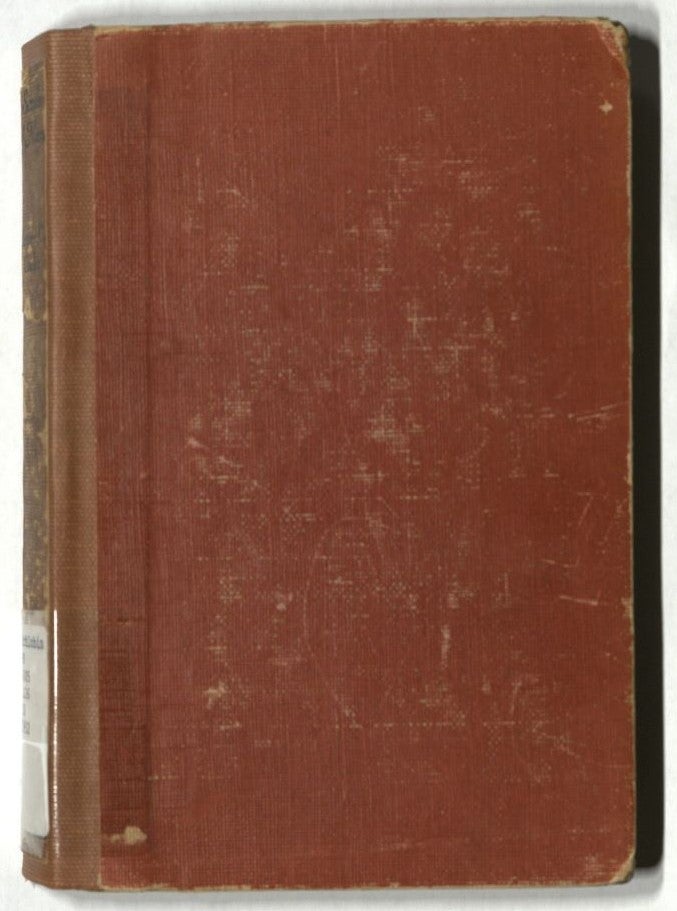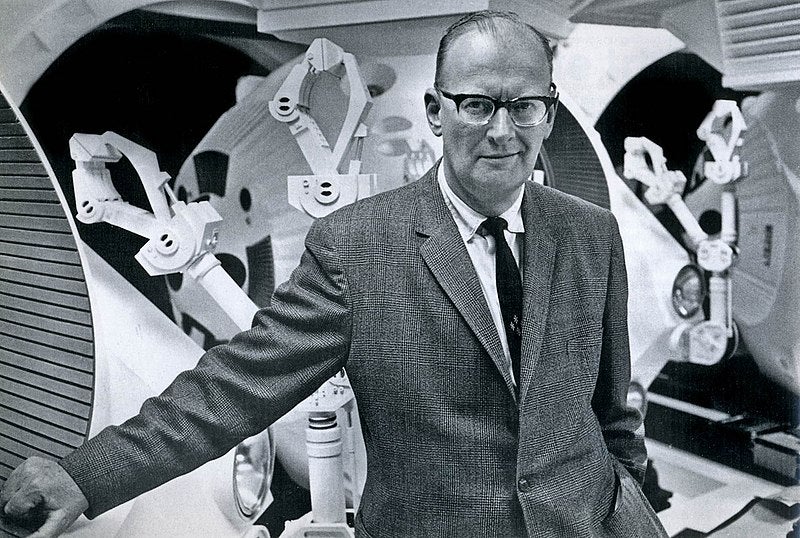Schlobin Selections #3: The Sand of Mars by Sir Arthur C. (Charles) Clarke

The Sands of Mars by Sir Arthur C. Clarke
Over the next several weeks, we will be highlighting a select number of titles and authors from the James H. and Virginia Schlobin Literature of the Fantastic Collection. Established in 2004 by East Carolina University English Professor Roger C. Schlobin, the James H. and Virginia Schlobin Literature of the Fantastic Collection provides scholarly materials to researchers and students interested in Science Fiction and Fantasy literature. The collection consists of over 3,700 individual books, mostly primary literature in the form of novels, and collected short narratives with some additional secondary literature and scholarly criticism related to the various genres that are represented. The James H. and Virginia Schlobin Literature of the Fantastic Collection also has a related manuscripts collection which consists of nearly 5 cubic feet of materials which can be accessed online.
Title: The Sand of Mars
Author: Sir Arthur C. (Charles) Clarke
Publisher: Gnome Press, Inc.
Publication Date: 1952
Page Count: 216
Call Number: PR6005.L36 S3 1952
Initially published in 1951, The Sands of Mars by Arthur C. (Charles) Clarke (1917-2008) is the author’s first published novel and helped Clarke go on to become one of the genre’s most distinguished writers. Set on the planet Mars, which has been colonized by humans prior to the beginning of the novel, Clarke’s work follows famed science fiction author Martin Gibson who has been invited to make the journey from Earth to the research station on Mars. During his trip, Gibson is introduced to Jimmy Spencer, a young astronaut in training who has been assigned to educate Gibson about space flight during their travels. The two quickly become friends and Gibson passes the time during the 3-month trip by opening up to the young man about the personal and professional troubles that have plagued his life up to this point.
Once the group reaches Mars, Gibson is introduced to the research station’s leadership team, Warren Hadfield, who serves as the Chief Executive of Mars, and Mayor Whittaker. Hadfield and Whittaker explain that their goal is to make the Mars colony completely self-sufficient and invite Gibson to explore the surrounding research stations with them. During their travels, Gibson observes the animal life, vegetation, and geography of Mars. It is also revealed to Gibson during this excursion that the Mars research station is not completely transparent with their Earth counterparts in regards to the work being done on the Red Planet as scientists are working on enriching the oxygen content of Mars by cultivating the planet’s vegetation. Gibson is also told about the research station’s work on “Project Dawn” which involves converting Mars’ moon Phobos into a second sun for the planet, with the goal of making the planet more suitable for human life

Sir Arthur C. Clarke on the set of filming for “2001: A Space Odyssey.” Image Credit: ITU Pictures
and existence. On top of all these revelations, Gibson is also shocked to discover a previously unknown family tie to the Mars colony that forces him to reconsider his relationship with both Earth and the growing secondary planet. This discovery of family, along with the revelations about the work that Hadfield and the team of scientists are undertaking convinces Gibson of the importance of the Mars colony and the need for it to be self-sufficient, just as Hadfield and Whittaker desire. In the end, after applying for permission to stay on Mars, Gibson is invited to become the colony’s public relations officer and is tasked with “selling” the Mars colony to other potential settlers.
Upon its initial publishing, much of what is described as the planet Mars in Clarke’s work comes from the limited knowledge of the planet at the time mixed with the vivid imitation of space travel and space exploration in the leading up to the space race. Overall, the reception for Clarke’s The Sands of Mars was good as the book helped distinguish him amongst the best science fiction writers of his time. Eventually, Clarke, alongside fellow writers Isaac Asimov and Robert A. Heinlein, would come to be recognized as one of the “Big Three” writers in the science fiction genre. Following The Sands of Mars, Clarke would write other notable and award-winning works such as Childhood’s End (1953), 2001: A Space Odyssey (1968), Rendezvous with Rama (1973), and The Fountains of Paradise (1979).
Read previous entries from Schlobin Selections.
Sources:
- “Arthur C Clarke – Official Website”. 2023. Arthurcclarke.Org. http://arthurcclarke.org/#start.
- Clarke, Arthur C. Sands of Mars. New York: Gnome Press, 1952.
- “Empmuseum.Org – EXHIBITIONS – SCIENCE FICTION HALL OF FAME – Science Fiction Hall Of Fame”. 2023. Web.Archive.Org. https://web.archive.org/web/20120722083938/http://www.empmuseum.org/exhibitions/index.asp?articleID=927.
- Tuck, Donald H. The Encyclopedia of Science Fiction and Fantasy. Chicago: Advent, 1974.
